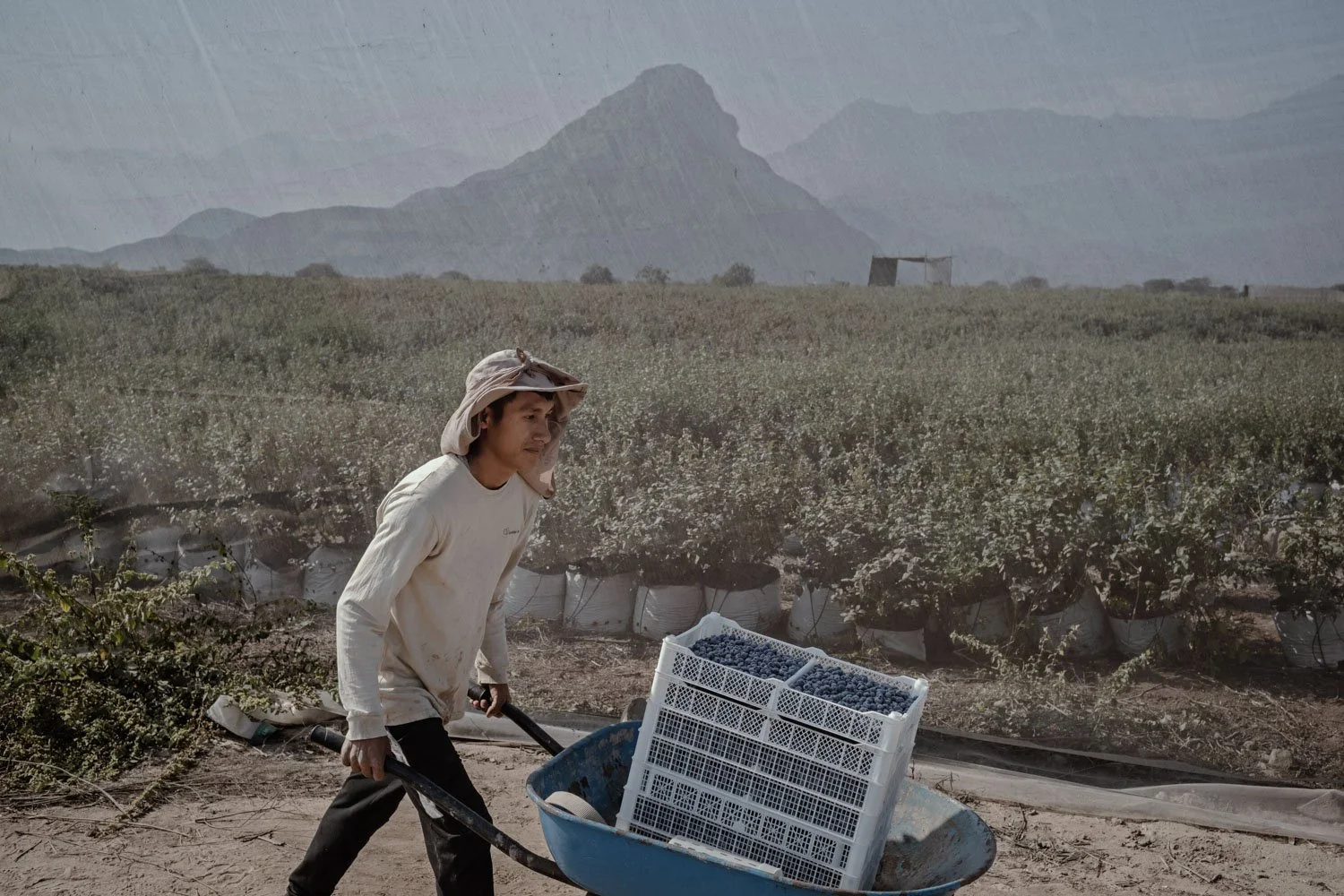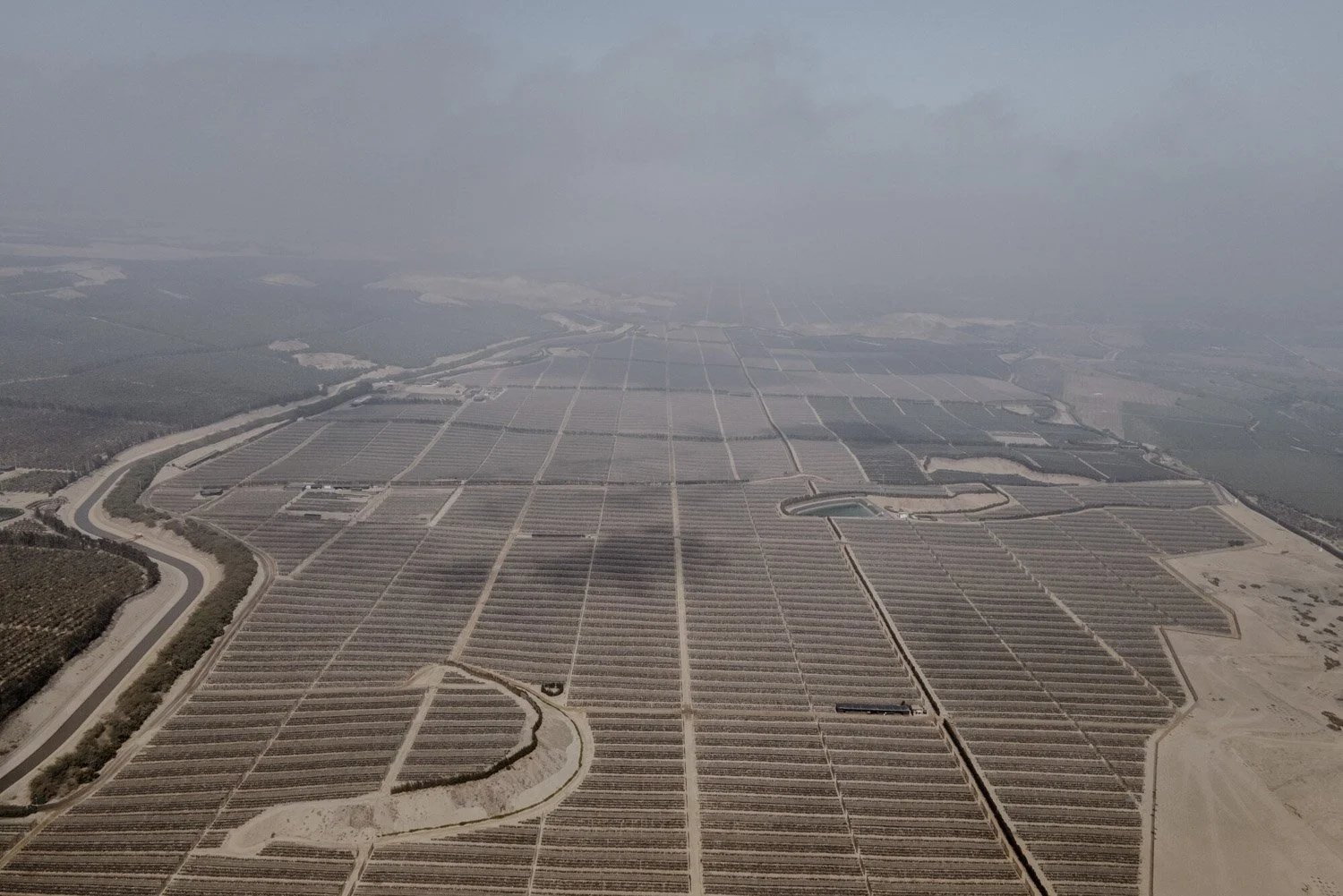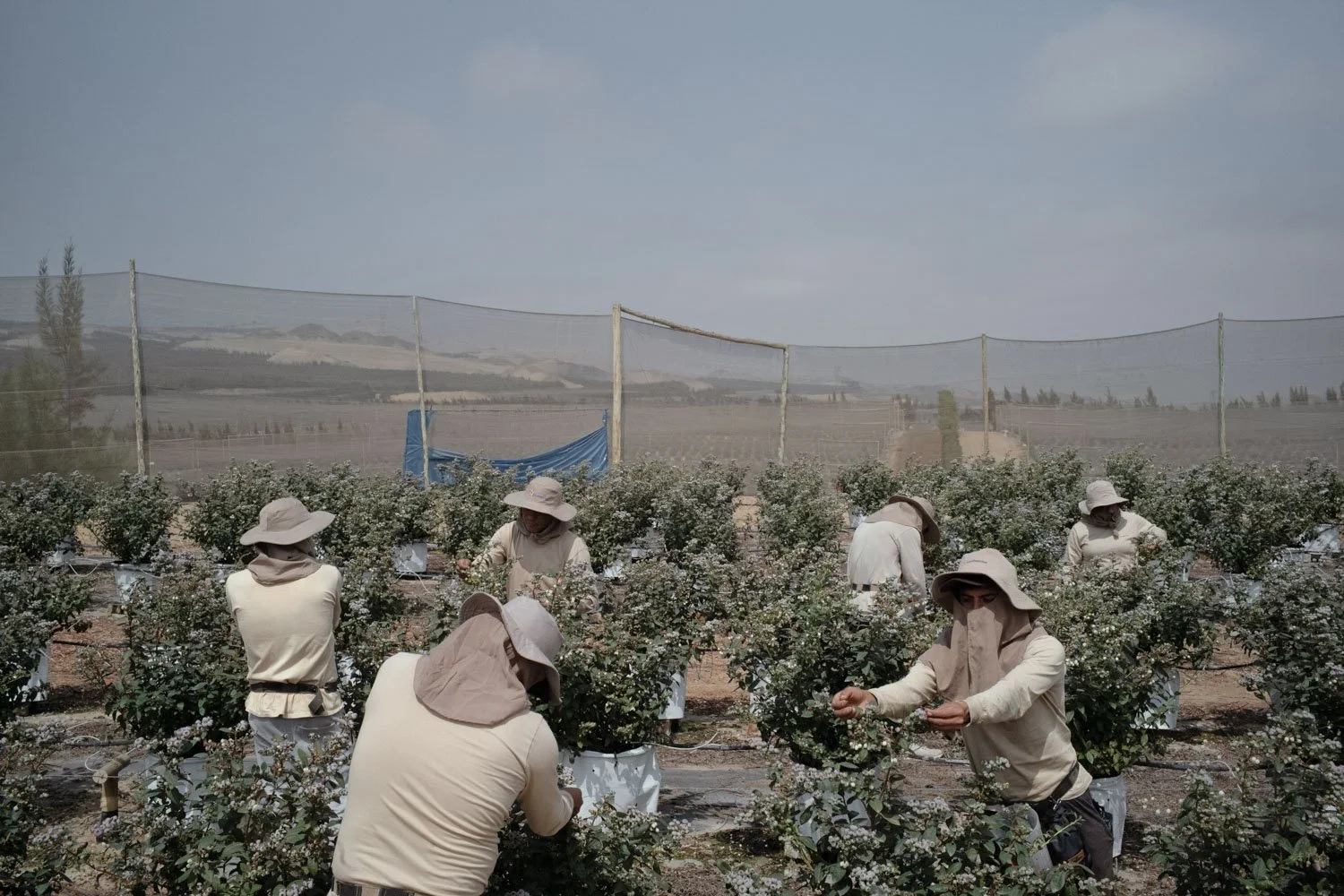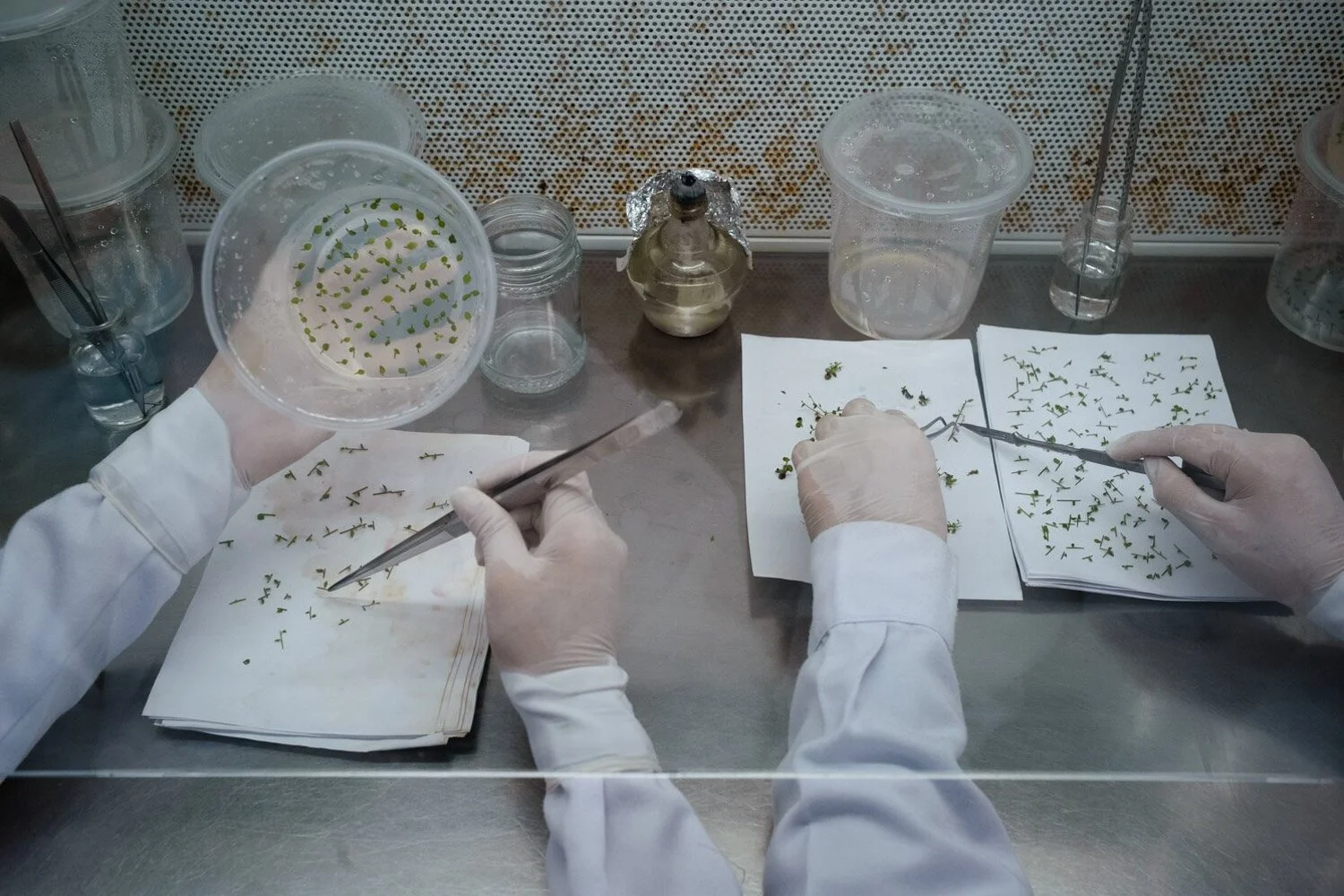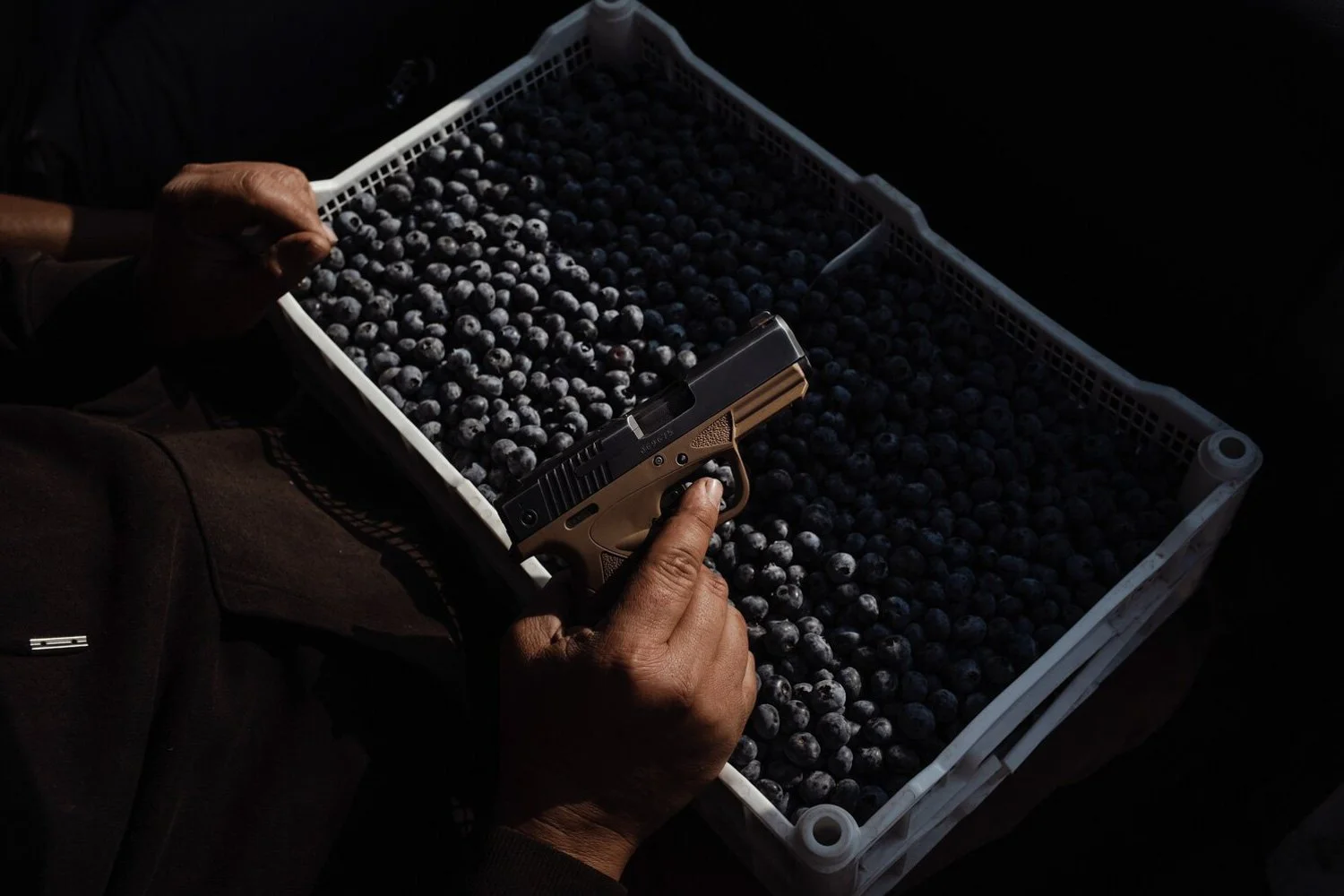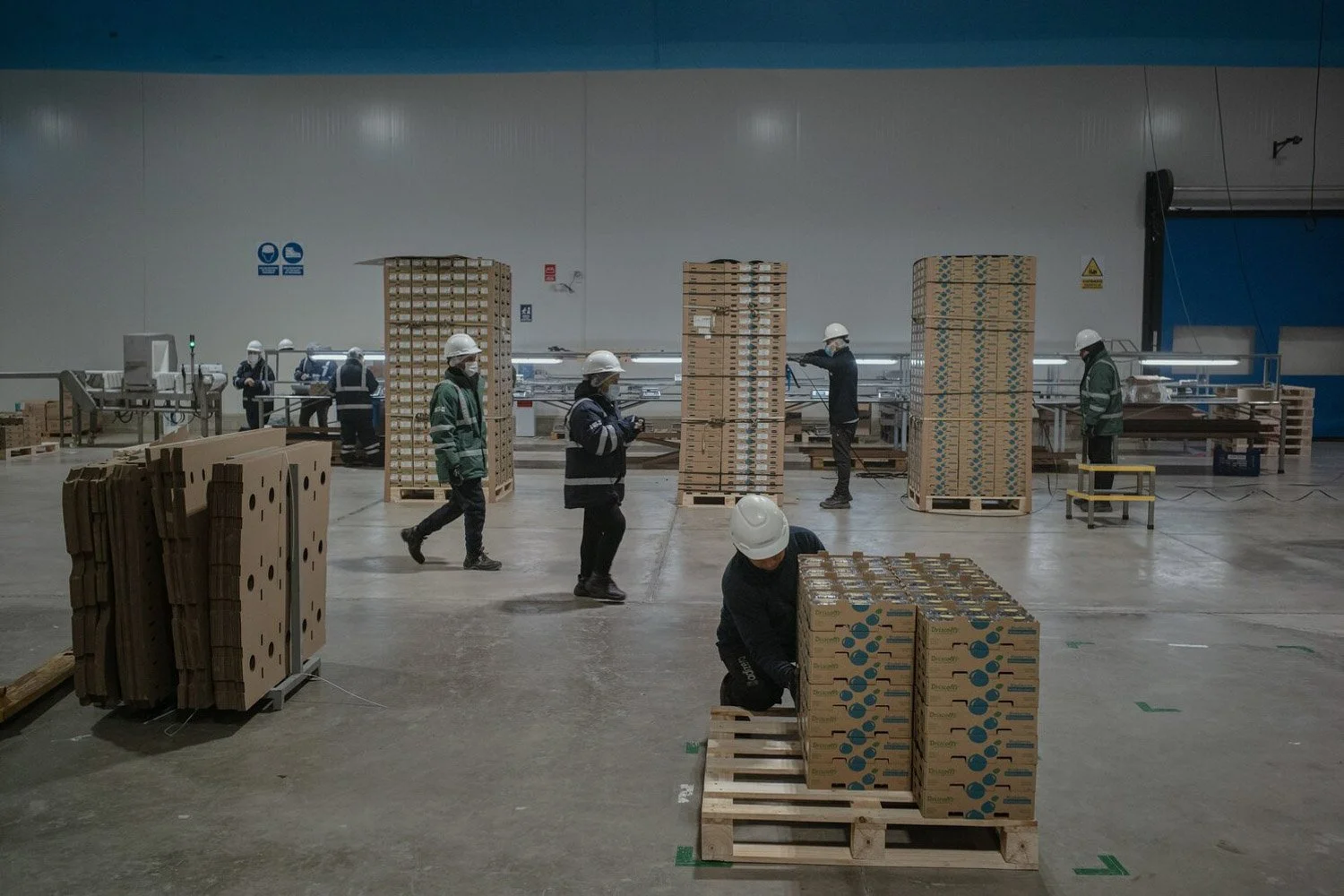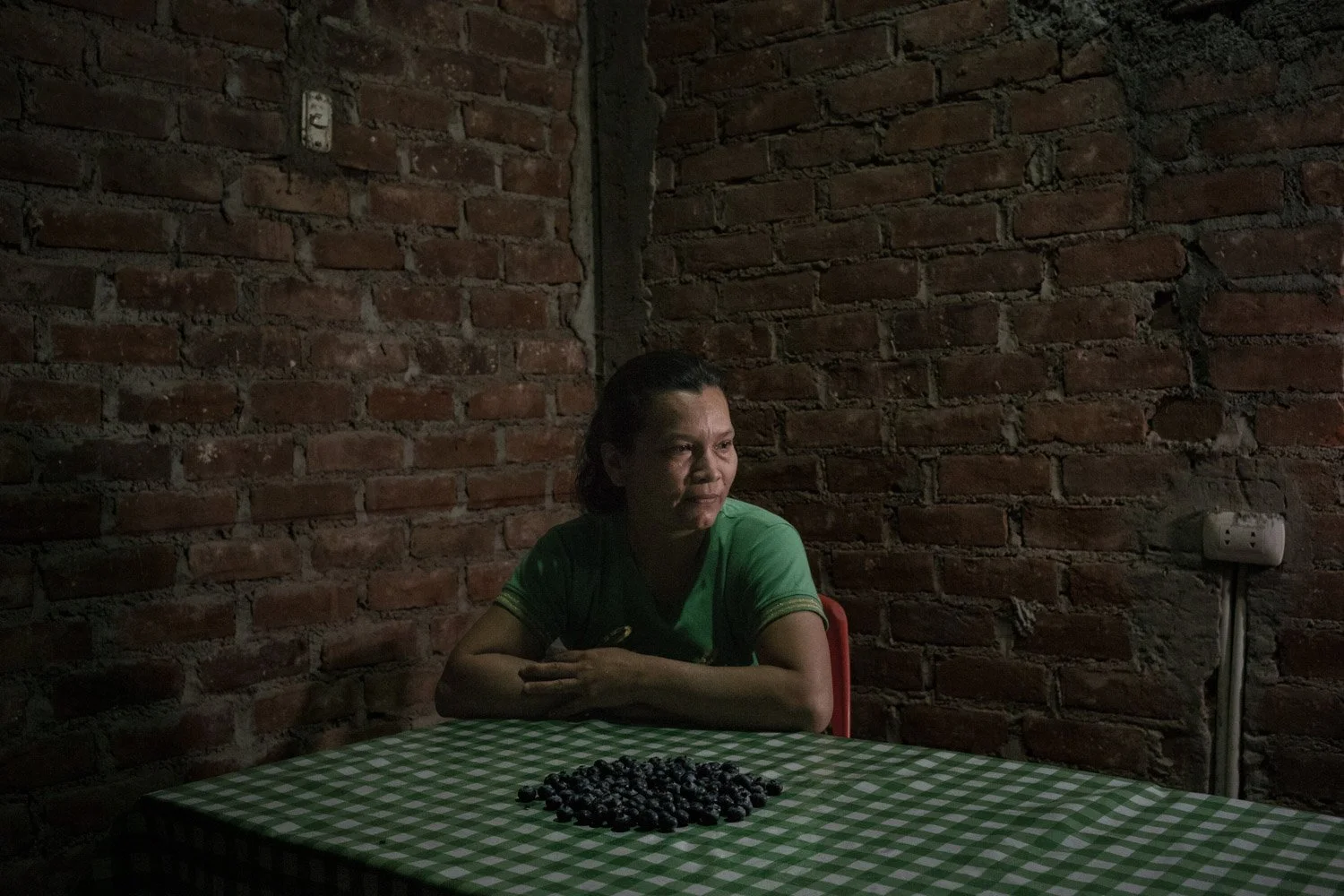The Peruvian Blue Gold
2024
Blueberries in small packages sell for $5 to $9 in New York supermarkets. Most are grown in Peru’s coastal desert—a country that barely knew blueberries a decade ago but is now the world’s top exporter.
For years, Peru was deemed unsuitable for blueberries, as traditional literature held these northern-hemisphere fruits required specific chill hours. Local entrepreneurs, however, defied this assumption, finding Peru’s coastal microclimate ideal for year-round production. Tax incentives and a cheap labor force attracted foreign and domestic companies, which profited by selling the fruit at a premium during the off-season in Chile and the U.S.Today, Peru’s blueberry industry employs 125,000 workers, making it the largest employer in Peruvian agriculture. As the world’s appetite for this healthy fruit grows, companies set new records in exports each year, with over half of sales going to the U.S. and nearly a quarter to Europe.
But this success has not translated to everyone the same way. The living conditions of blueberry harvesters, mostly women, have changed little, if at all.
They continue to live in poverty in informal settlements without access to running water and electricity, and with a basic daily salary barely enough to afford three packages of blueberries in New York. Some claim conditions worsened after a 2021 agrarian law mandated a 30% wage bonus but also led to intensified company demands.
“Sometimes we don’t even have enough for the children’s schooling,” says Julisa González, a picker at Camposol, Peru’s largest blueberry exporter. Her husband also works for the same company, yet their combined income barely meets the needs of their seven-member household.
In 2023, Peru’s blueberry boom hit its first major setback. An El Niño-driven heatwave struck the northern coast, the heart of blueberry production. Temperatures soared 40°F above average, marking Peru’s warmest winter in over 60 years. The heat devastated some blueberry varieties, slashing production by 25%.
The crisis, along with rising temperatures from climate change, has sped up the development of heat-resistant blueberry varieties. Scientists are crossbreeding parent plants to identify resilient individuals for cloning and in vitro multiplication. Another focus is creating “jumbo” blueberries—inch-long fruits—to increase yields and meet market demands, especially in China. Even accounting for extreme weather, Peru sold a record $1.7 billion worth of fresh blueberries overseas in 2023.
To access the full edit please send a request to info@alessandrocinque.com
